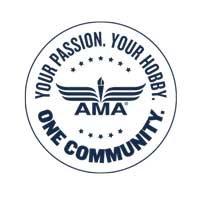Greetings, all! I'm interested in getting into the RC airplane hobby. I've done much online research recently, but the time has come to talk with real people. Thank you for this forum! The plan right now is to learn all I can over the Winter, purchase a suitable trainer airplane in the Spring and eventually have a small hangerful of my favorite warbirds (F4U, FW190, P38). The theme is as scale and as large as possible without spending big bucks on anything gas powered. As for my level of experience, I have none with airplanes. The good news is I'm pretty good with drones, from toys to the advanced hobby variety. I haven't destroyed or lost anything expensive yet! Now for a specific question, the first of many I'm sure.
I live in a rural area with many open acres and few neighbors around me. Unfortunately, none of it is really suitable and available as a runway at this time. But there is a 1.5 acre lake on the property. So I'm thinking a seaplane or floatplane would be a good choice for me as a trainer. The "runway" would be perfectly flat and smooth, and much softer than most! Specifically, I am looking at the Dynam 1470mm PBY. It should be very stable in the water with the outrigger floats. I'm also thinking about adding a gyro to it to give a newbie much needed stability in the air. Sound like a plan? :idea::-/
Thank you for taking the time to send this newbie in the right direction... :shy:
PS: Are there any RC flying clubs in my area (Maryland near Pennsylvania and Delaware, AKA Ceciltucky)?
I live in a rural area with many open acres and few neighbors around me. Unfortunately, none of it is really suitable and available as a runway at this time. But there is a 1.5 acre lake on the property. So I'm thinking a seaplane or floatplane would be a good choice for me as a trainer. The "runway" would be perfectly flat and smooth, and much softer than most! Specifically, I am looking at the Dynam 1470mm PBY. It should be very stable in the water with the outrigger floats. I'm also thinking about adding a gyro to it to give a newbie much needed stability in the air. Sound like a plan? :idea::-/
Thank you for taking the time to send this newbie in the right direction... :shy:
PS: Are there any RC flying clubs in my area (Maryland near Pennsylvania and Delaware, AKA Ceciltucky)?









Comment